Archaeologists excavating in Nuremberg, Germany, have discovered what might be the largest mass burial site of plague victims ever identified in Europe. A recently uncovered section of one of the graves shows bodies interred in a seated position (left) and others lying on their sides (bottom half), with a dense concentration in the center of the pit. Credit: In Terra Veritas.
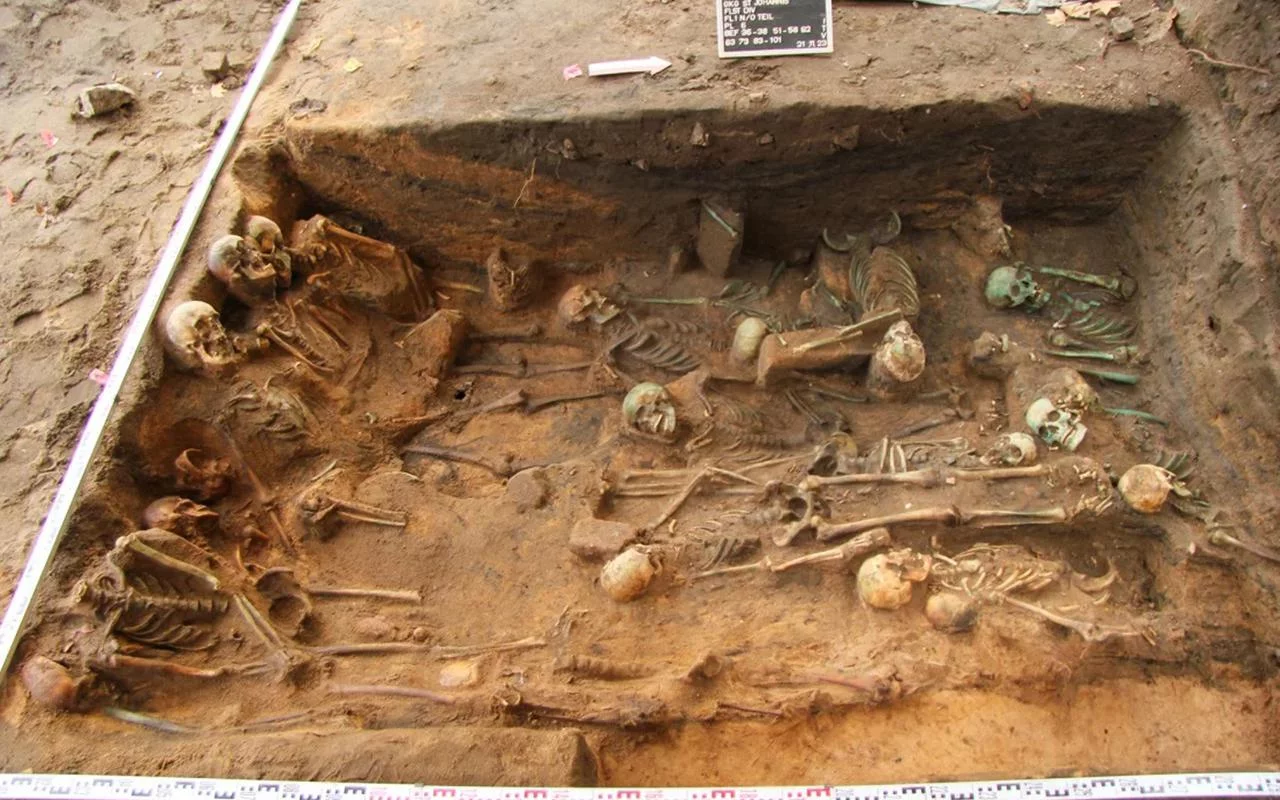
The excavation, led by archaeologist Melanie Langbein from the Department of Heritage Conservation in Nuremberg and Julian Decker from the excavation firm ‘In Terra Veritas,’ has revealed eight mass graves containing hundreds of skeletons. To date, remains of over 1,000 individuals have been recovered, and estimates indicate that the total could reach as high as 1,500 or more.
The bubonic plague was a highly infectious and lethal disease that swept through Europe in various waves throughout history. Radiocarbon dating, along with historical records—including a note from 1634 describing a plague outbreak in the early 17th century—provide essential insights for dating the remains. This evidence suggests that the mass graves likely originate from the epidemic of 1632-1633.
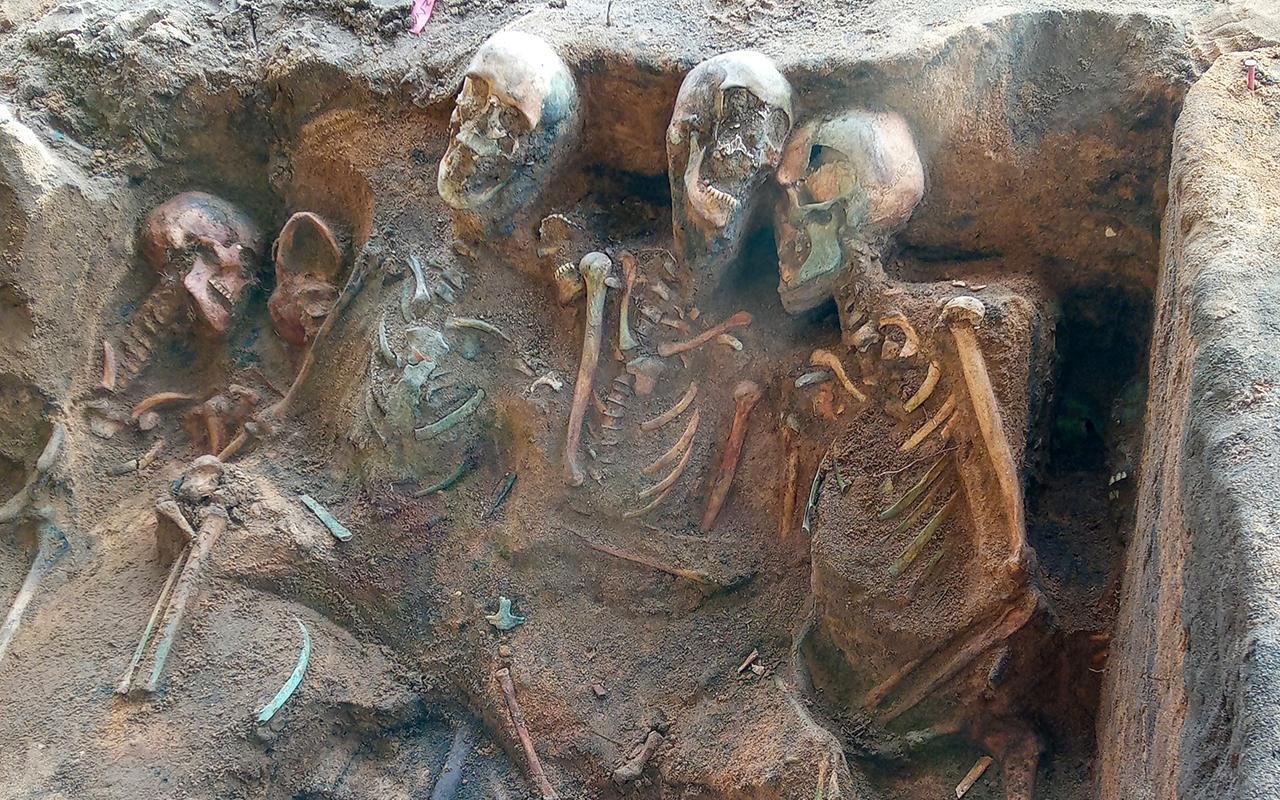
The excavation not only uncovers the tragic impact of the epidemic but also reveals the rushed and atypical burial methods that arose from the urgent need to manage the deceased. Bodies were densely packed into the pits, with little regard for traditional Christian burial practices. Langbein remarked, “This indicates a substantial number of deceased individuals who had to be buried within a limited timeframe, disregarding Christian customs.”
The green discoloration observed on some bones is attributed to the historical disposal of waste from a nearby copper mill. Credit: In Terra Veritas. This discovery calls into question previous assumptions about burial practices during plague outbreaks, shedding light on the desperation and turmoil that overwhelmed communities facing such extensive death and hardship.
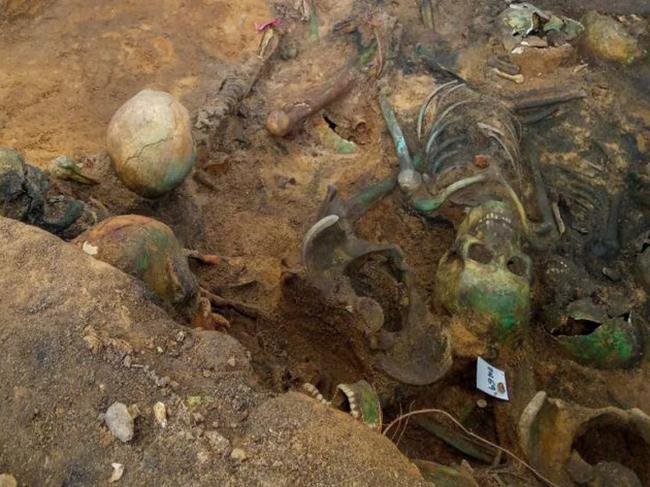
Nuremberg’s Lord Mayor Marcus König emphasized the importance of this find, noting that “The graves contain the mortal remains of children and elderly individuals, men and women; the plague did not discriminate by gender, age, or social status.” Julian Decker, head of the excavation company, echoed this sentiment, expressing his astonishment at the vast number of skeletal remains uncovered.
Despite challenges such as damage from World War II bombing and environmental factors like contamination from local industries staining the remains, archaeologists are committed to thoroughly documenting and analyzing each finding. The remains are believed to date back to the 1632-1633 plague epidemic. Credit: In Terra Veritas.
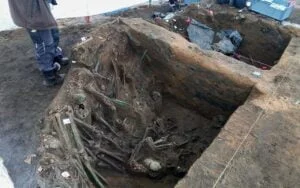
Plans for further research are already underway, including DNA analysis of the bones and examination of parasite eggs in the soil. Florian Melzer, an anthropologist involved in the excavation, stated, “We can now extract detailed information contained within these bones, such as the prevalence of various cancers, genetic mutations visible in skulls, age and sex determination, dental health status, and insights into overall health and living conditions during this period.”
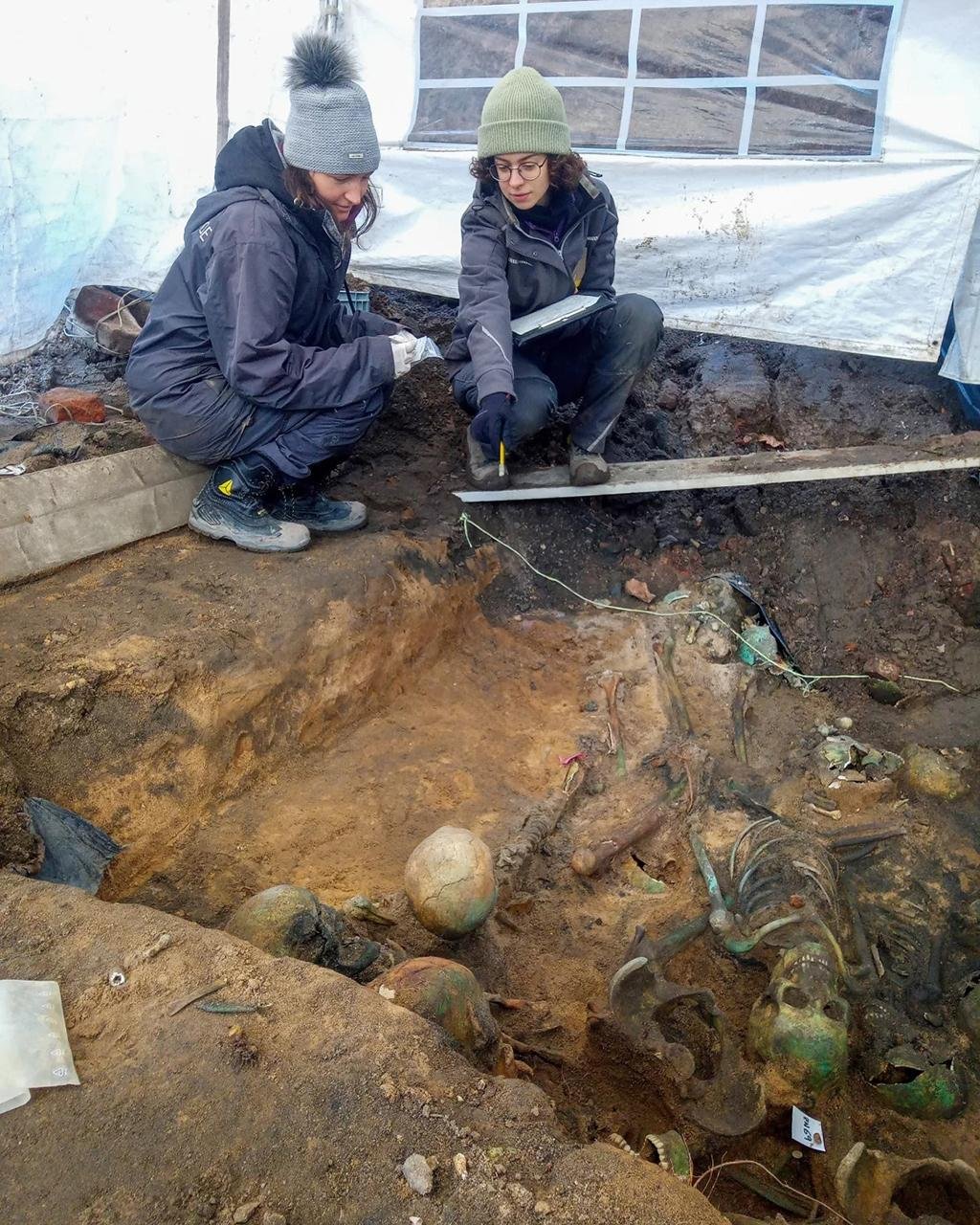
Ralf Schekira, managing director of the construction project company, highlighted the necessity of balancing development demands with cultural heritage preservation, stating, “We did not anticipate such a discovery and will now strive to make the most of this situation.”

